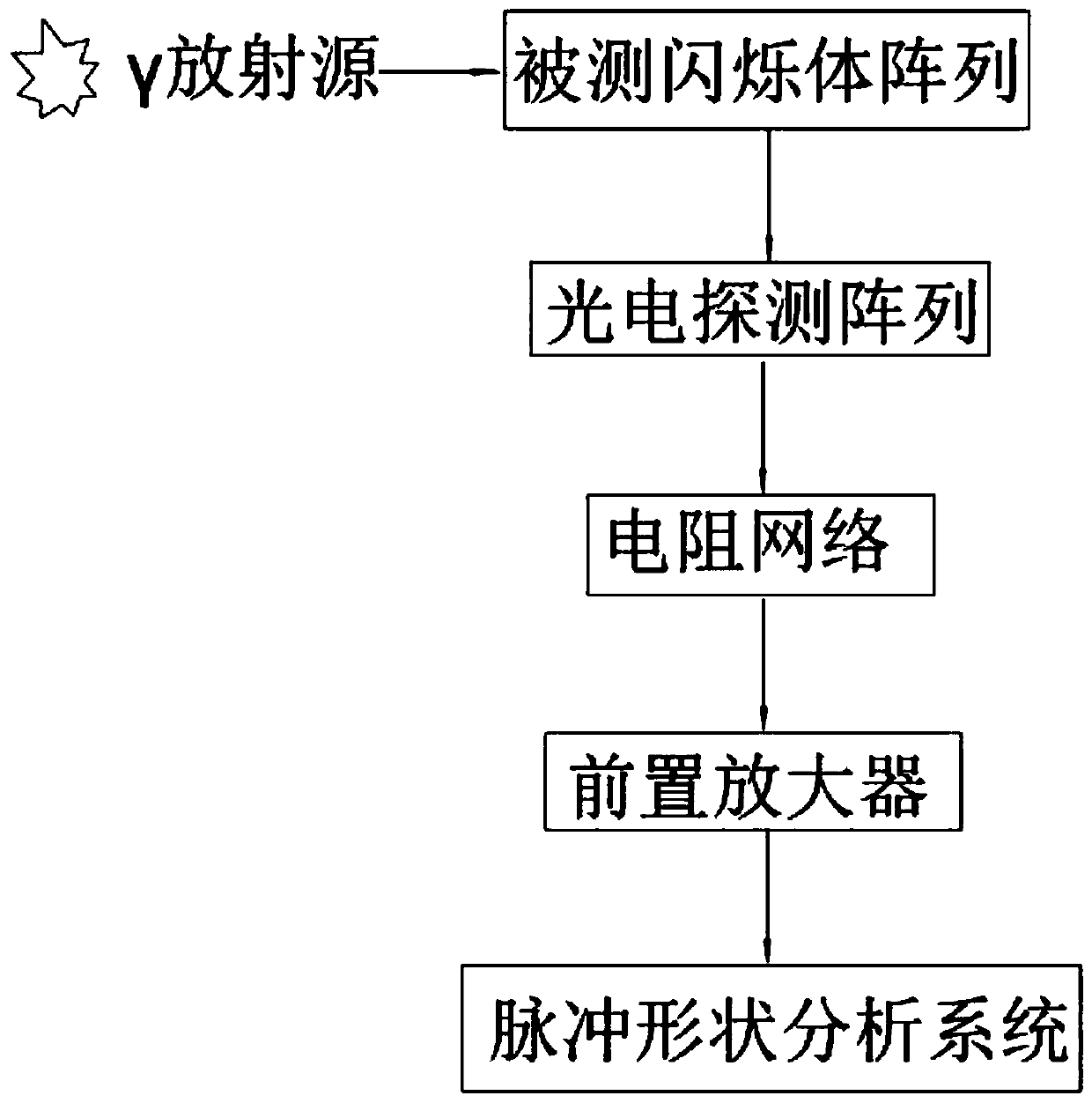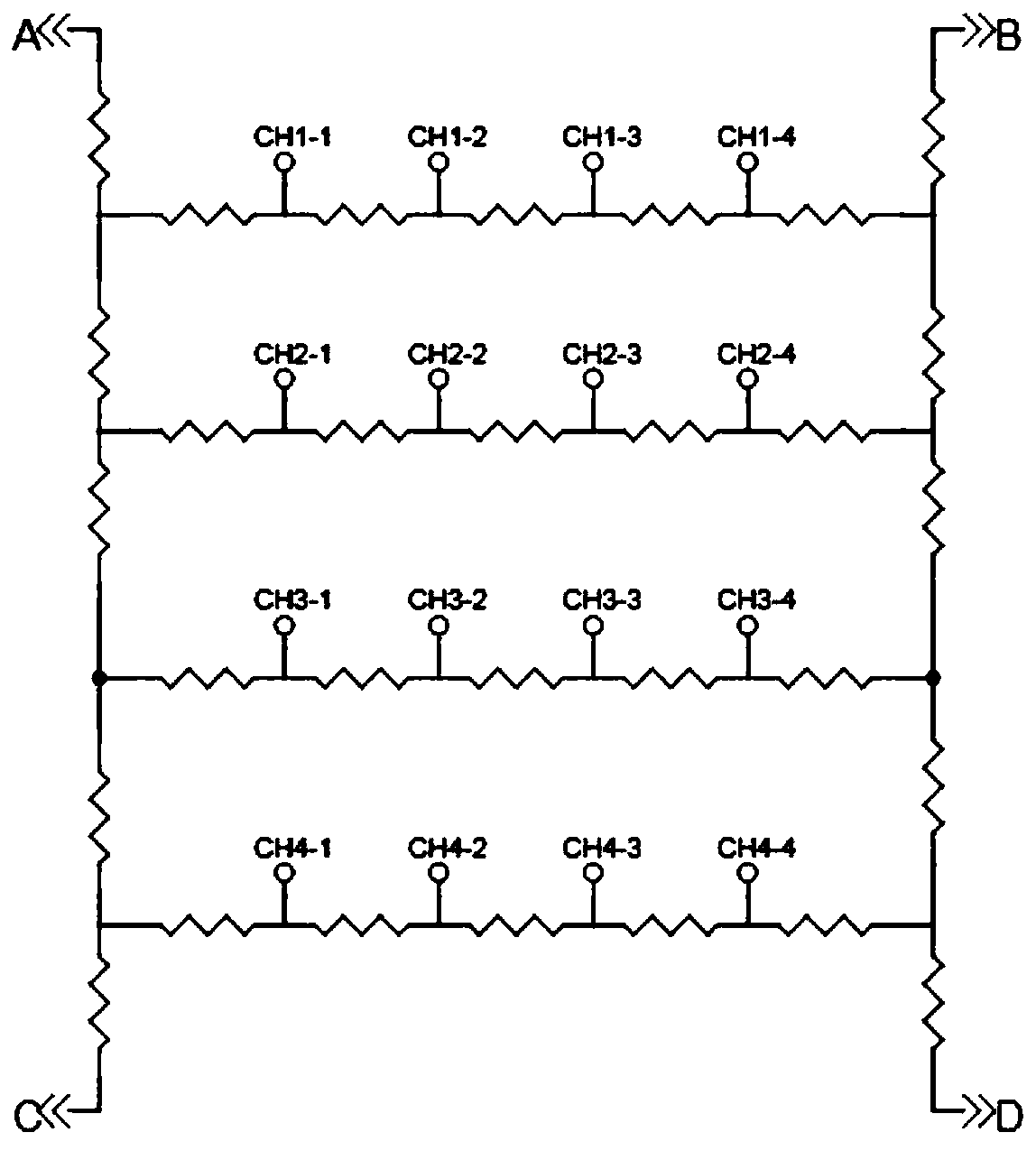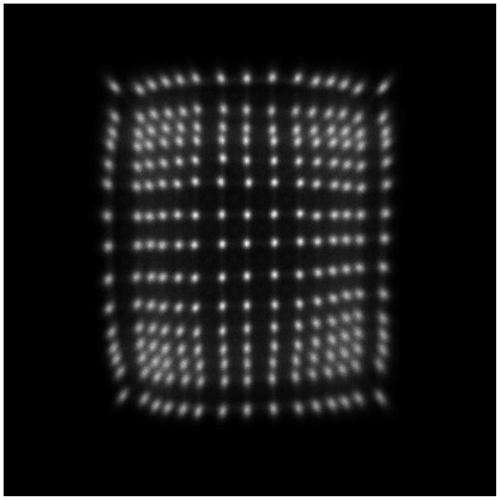A scintillator array luminescence decay time testing method
A technology of luminescence attenuation and test method, which is applied in the field of radiation detectors, can solve the problems of indistinguishable scintillator performance and low scintillator efficiency, and achieve the effect of improving test efficiency
- Summary
- Abstract
- Description
- Claims
- Application Information
AI Technical Summary
Problems solved by technology
Method used
Image
Examples
Embodiment 1
[0039] This embodiment provides a method for testing the luminescence decay time of a scintillator array, the method comprising the following steps:
[0040] Step S1: The scintillation light emitted by the scintillator array under test is received by a correspondingly set photodetection array, and converted into an electrical pulse signal.
[0041] Step S2: The electric pulse signal obtained in step S1 is transmitted to the resistance network, and the resistance network integrates the input electric pulse signal into four output electric pulse signals, and the four output electric pulse signals pass through four front The preamplifier is sent to the pulse shape analysis system to obtain four channels of pulse shape information.
[0042]Step S3: Perform the first correction on the four channels of pulse shape information obtained in step S2, respectively, to obtain the four channels of pulse shape information after the first correction.
[0043] Step S4: Calculate the area of ...
Embodiment 2
[0057] A kind of test device of scintillator array luminescence decay time designed according to the method described in embodiment 1, such as figure 1 As shown, it includes a photodetector array connected in sequence, a resistor network, a preamplifier and a pulse shape analysis system. When the scintillator array under test emits light, the photodetector array receives the light emitted by the scintillator array under test, and then converts the The optical signal is converted into an electrical pulse signal and sent to the resistor network, and the resistor network sends the electrical pulse signal to the preamplifier for signal amplification, and then the preamplifier sends the amplified electrical pulse signal to the pulse shape analysis system for electrical pulse signal information collection and analysis.
[0058] A test device for the luminescence decay time of a scintillator array of the present invention can simultaneously measure the relative light yield and lumine...
Embodiment 3
[0066] The present embodiment slightly differs as follows on the basis of the above-mentioned general scheme:
[0067] The scintillator array to be tested is a 15×15 LYSO scintillator array, and the luminescence decay time of each scintillator in the 15×15 LYSO scintillator array is obtained. Because LYSO has spontaneous radioactivity, no external radioactive source is used, so no need to set γ radioactive source.
[0068] Specifically, because the luminescence spectrum peak value of LYSO is 420nm, the photodetector array selects the square PMT multi-channel photomultiplier tube with 8×8 double-alkali photocathode and configures the corresponding light guide; the resistor network is composed of figure 2 The 4×4 signal input shown in is adaptively expanded to 8×8 signal input, and the test on the 15×15 LYSO scintillator array can be completed, and the same as in Example 1, let N=9, and finally Similarly, the outputs of 8×8 photodetectors are integrated into four outputs of A,...
PUM
 Login to View More
Login to View More Abstract
Description
Claims
Application Information
 Login to View More
Login to View More - R&D
- Intellectual Property
- Life Sciences
- Materials
- Tech Scout
- Unparalleled Data Quality
- Higher Quality Content
- 60% Fewer Hallucinations
Browse by: Latest US Patents, China's latest patents, Technical Efficacy Thesaurus, Application Domain, Technology Topic, Popular Technical Reports.
© 2025 PatSnap. All rights reserved.Legal|Privacy policy|Modern Slavery Act Transparency Statement|Sitemap|About US| Contact US: help@patsnap.com



